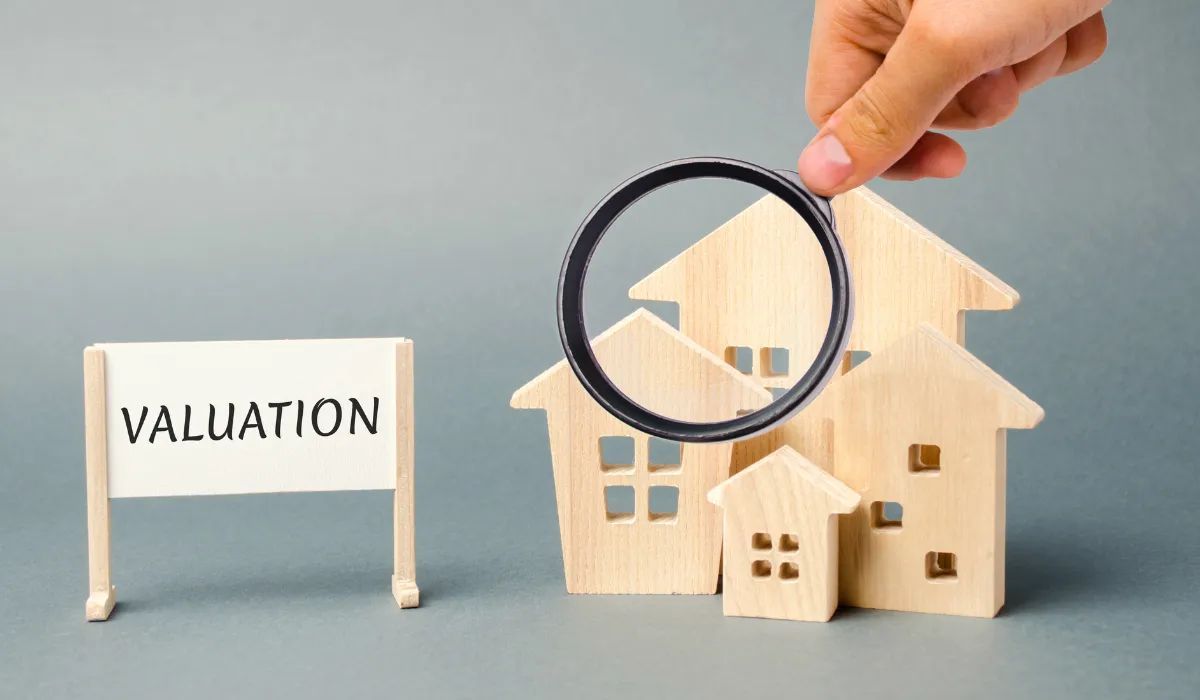Real Estate Valuation Estimate & Pricing Systems 2025
Everything You Need to Know About Estate Valuation and Pricing System Today

Estate valuation is a term that can sound complicated, but at its heart, it answers a very simple question: What is this property worth today?
Whether you’re a homeowner thinking of selling, an investor considering your next move, or an executor managing an inheritance, estate valuation provides the foundation for confident decision-making.
In 2025, the process of valuation has become more advanced, more accurate, and more accessible than ever before.
With traditional appraisal methods still forming the backbone of property assessment and modern technology introducing faster, data-driven systems, estate valuation and pricing has entered a new era.
In this article, we’ll walk through why accurate valuations matter, the main systems being used in 2025, and how you can understand the differences between traditional and modern methods.
By the end, you’ll see how estate valuation pricing systems work together to keep real estate fair, transparent, and trustworthy.
Why Accurate Estate Valuation Matters
An estate valuation is much more than a number scribbled in a report.
It’s the compass that guides every real estate decision. Imagine trying to buy or sell a home without knowing its fair value — chaos would quickly follow.
That’s why accuracy in valuation is critical, not just for buyers and sellers but for the entire market.
- For buyers: A precise real estate valuation estimate protects them from overpaying. If a house is valued fairly at $450,000 but the seller is asking $500,000, a proper appraisal helps the buyer negotiate or walk away with confidence.
- For sellers: A clear, evidence-based valuation ensures they set a price that attracts buyers without leaving money on the table. Overpricing can keep a property stuck on the market for months, while underpricing can mean lost equity.
- For investors: Accurate valuation is the difference between a profitable investment and a risky gamble. It helps them measure potential returns, compare opportunities, and allocate funds wisely.
- For lenders: Banks and financial institutions depend on reliable valuations to decide how much they’re willing to lend. This reduces the risk of lending more than a property is truly worth.
- For families and heirs: In estate planning and inheritance situations, valuations provide clarity and fairness when dividing assets.
Beyond individual transactions, accurate estate valuation and pricing systems stabilize the entire property market.
They give governments data to set fair property taxes, help developers plan future projects, and support policymakers in tracking housing affordability.
Without them, real estate would be driven by speculation and guesswork rather than evidence and balance.
The Traditional Appraisal Methods
Even with all the technology we have today, traditional appraisal methods remain at the center of estate valuation pricing systems.
These methods have stood the test of time because they’re logical, reliable, and rooted in real-world data. Let’s look at the three most widely used approaches.
Sales Comparison Approach
The Sales Comparison Approach, also called the Market Approach, is the simplest and most relatable method.
It works on the principle of substitution: people won’t pay more for a property than they would for a similar one nearby.
Appraisers look at recent sales of comparable homes — called “comps” — and adjust values based on differences.
For example, if a home sold for $480,000 but had an extra bedroom compared to your property, the appraiser might adjust downward to match.
Strengths of this method:
- It reflects real market behavior since it uses actual sale prices.
- Buyers and sellers find it easy to understand because it compares “apples to apples.”
- It works well in active, stable markets with lots of recent transactions.
Limitations:
- If few homes have sold recently, data becomes thin and less reliable.
- Adjusting for differences between properties can involve a level of subjectivity.
- In rapidly changing markets, comps may be outdated within months.
When it’s best used:
- Suburban neighborhoods with plenty of sales activity.
- Standard residential properties like single-family homes, condos, or townhouses.
- Areas with uniform housing styles where comparison is straightforward.
2. Cost Approach
The Cost Approach, often referred to as the Replacement Cost Method, asks a simple question: What would it cost to rebuild this property today?
The appraiser estimates the current construction cost of replacing the building, subtracts depreciation (the wear and tear over time), and then adds the land’s value. This gives a total estimate of the property’s worth.
Strengths of this method:
- It’s very useful for new buildings where construction costs are easy to estimate.
- It gives a clear breakdown between land value and building value.
- It avoids the subjectivity of comparing comps by focusing on costs.
Limitations:
- Calculating depreciation accurately is difficult, especially for older homes.
- It can undervalue properties in markets where land prices far outweigh construction costs.
- It’s less reliable for older or highly renovated properties.
When it’s best used:
- Newly constructed homes or commercial buildings.
- Special-purpose properties like schools, churches, or government facilities where sales data is rare.
- Insurance valuations, since insurers need to know replacement costs for coverage.
Income Capitalization Approach
This approach is the go-to for income-producing properties like rental apartments or office complexes.
Instead of focusing on construction or comparison, it looks at the money a property generates.
The value is calculated by taking the property’s net income (rent minus expenses) and dividing it by a capitalization rate (the expected rate of return in the market).
Strengths of this method:
- It focuses directly on income potential, making it highly relevant to investors.
- The cap rate reflects real-world investor expectations.
- It adapts to different income and expense scenarios.
Limitations:
- Projections of future income can be uncertain, especially in changing markets.
- Requires strong, reliable data on rent levels and expenses.
- Less useful for properties without steady income streams.
When it’s best used:
- Apartment buildings with stable rental income.
- Retail spaces, warehouses, or office buildings with long-term leases.
- Investment analysis where financial return is the main concern.
Modern Estate Valuation Pricing Systems
While traditional methods remain powerful, 2025 has seen technology reshape the landscape.
New systems now bring speed, consistency, and deeper insights into the process of valuation. Let’s break them down.
Automated Valuation Models (AVMs)
These are the tools behind online “What’s my home worth?” calculators.
AVMs use algorithms that pull data from thousands of property records, sales histories, tax assessments, and market trends.
Advantages:
- Instant results make them ideal for quick checks.
- Cost-effective compared to hiring an appraiser for every estimate.
- Apply consistent logic across all properties.
Challenges:
- They can’t always account for unique property features like luxury renovations or unusual layouts.
- Rely heavily on the accuracy of available data.
- In fast-changing markets, they may lag behind current conditions.
Where they shine:
- Large-scale mortgage or portfolio analysis.
- Property tax assessments.
- Quick preliminary valuations before deeper analysis.
Geographic Information Systems (GIS)
GIS adds a powerful layer of location-based analysis. Instead of just looking at numbers, it integrates maps, demographics, zoning laws, and environmental factors.
Advantages:
- Reveals how amenities, schools, transit, or green spaces affect values.
- Helps identify new market trends by visualizing spatial data.
- Useful for urban planning, zoning, and development decisions.
Challenges:
- Requires detailed, updated data to be accurate.
- Can be expensive for smaller appraisal firms.
- Needs skilled professionals to interpret results.
Where it works best:
- Evaluating development opportunities.
- Assessing neighborhood risks such as flood zones or environmental hazards.
- Large-scale urban projects where location factors are crucial.
AI-Driven Pricing Platforms
Artificial Intelligence is the latest wave in estate valuation and pricing systems.
These platforms use machine learning to spot patterns humans might miss. They don’t just look at historical sales; they predict where the market is heading.
Advantages:
- Highly adaptive to sudden market changes.
- Capable of analyzing huge datasets in real time.
- Provide predictive insights that go beyond simple estimates.
Challenges:
- Dependence on data quality remains a challenge.
- They can’t fully replace human appraisers’ judgment and local knowledge.
- Still new, meaning adoption is uneven across the industry.
Where they’re most useful:
- Fast-moving urban real estate markets.
- Investors who need predictive insights.
- Hybrid systems where AI supplements traditional appraisal work.
Why Comparing Valuation Systems Matters
Every property is unique, and no single system is perfect. By comparing methods, appraisers, investors, and homeowners can build confidence in the numbers.
- Cross-verification: If the Sales Comparison Approach values a home at $450,000 and an AVM gives $455,000, you can be confident the estimate is fair.
- Adaptability: A new luxury condo may need both Cost Approach and AI pricing tools to balance accuracy.
- Better decisions: Comparing systems gives a 360-degree view, making it easier to manage risks and set fair prices.
For example, a bank might request an AVM for speed, but then confirm the results with an appraiser using the Sales Comparison Approach before finalizing a loan.
Real Estate Valuation Estimate in Practice
So, what happens when you actually request a real estate valuation estimate?
In most cases, the result is not based on a single method but a combination.
A real estate valuation professional appraiser may lean on comps but also consider construction costs and income potential.
Meanwhile, an online platform may use an AVM but suggest checking with a certified appraiser for confirmation.
This blended approach ensures numbers are realistic, market-driven, and reliable enough to make decisions.
The Future of Estate Valuation and Pricing Systems
Looking ahead, several trends are shaping where valuation is going:
- Artificial Intelligence will continue to refine accuracy by analyzing live market data.
- Blockchain could secure property records, reducing fraud and increasing trust in valuations.
- Hybrid Models that combine traditional appraisal with technology will likely dominate.
But even with all this innovation, one truth remains: human expertise is irreplaceable.
Local appraisers understand neighborhood quirks, market psychology, and unique property traits that algorithms simply can’t capture.
The most reliable valuations of the future will blend both human judgment and advanced systems.
Conclusion
Estate valuation may seem like a technical field, but at its heart, it’s about fairness, clarity, and confidence in property transactions.
From the classic Sales Comparison Approach to cutting-edge AI platforms, the estate valuation and pricing systems of 2025 give us tools to measure property worth with more accuracy than ever before.
Whether you’re a homeowner curious about your equity, an investor weighing risk and return, or a policymaker shaping communities, understanding how these systems work empowers you to make informed decisions.
In short: technology is making valuations faster and smarter, but experience and professional insight remain just as essential.
The future of estate valuation lies in the balance between innovation and human expertise.












